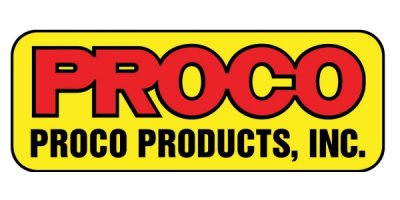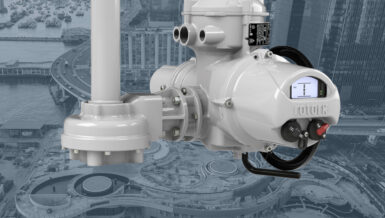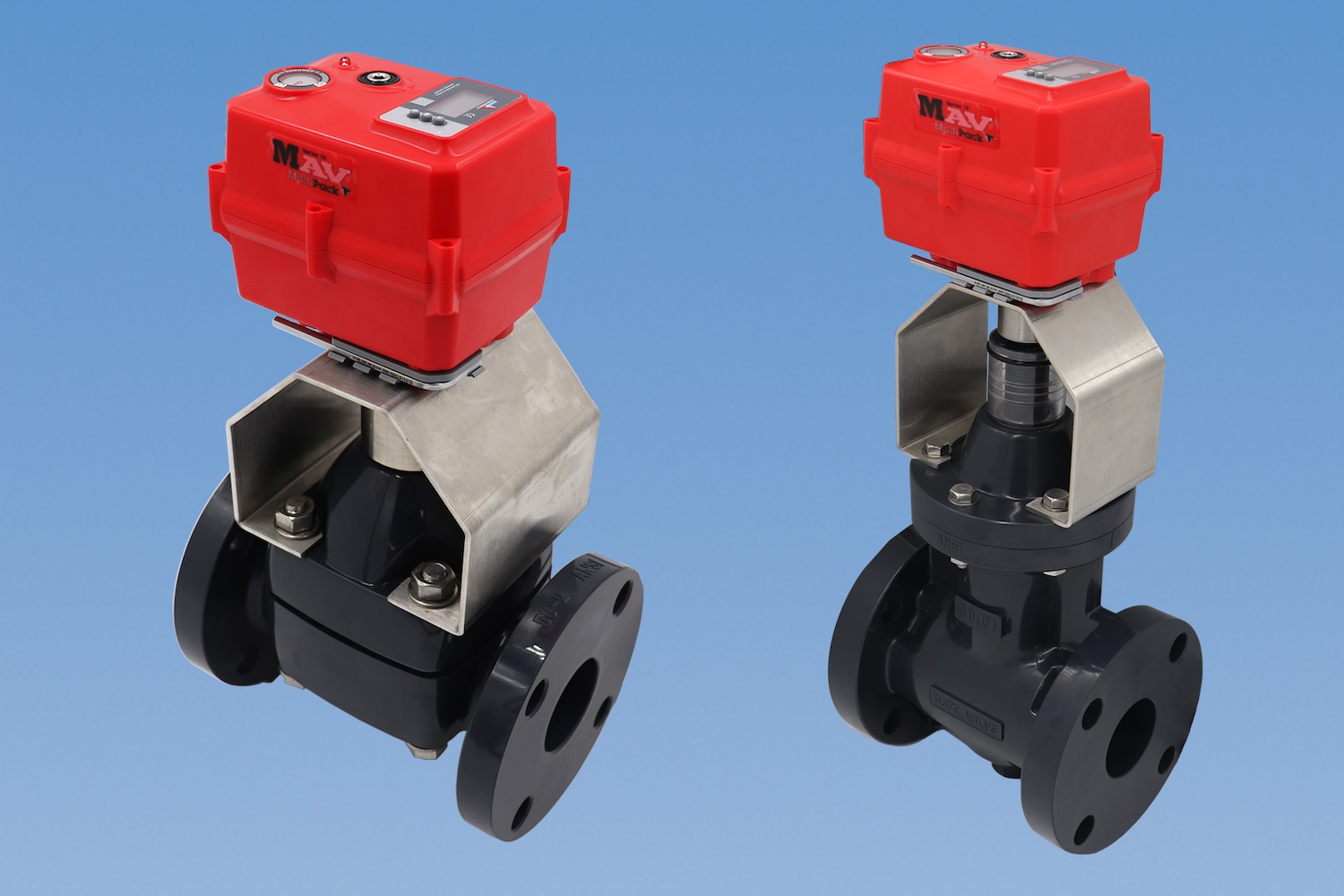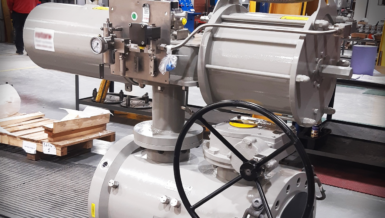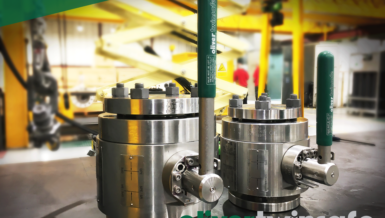What is a Check Valve and Why is it Useful?
These valves come in a variety of diameters and designs, including swing, ball, diaphragm and duckbill check valves. They are simply designed, passive devices that rely on flow velocity and pressure to open and close without any manual or automated assistance.
Properly designed and operating check valves prevent flooding and standing water, control back pressure from wastewater treatment plants and outfalls, and ensure water flows through piping in the correct direction.
The Problem of Standing Water
Poorly controlled stormwater or backflowing sewage results in flooding and/or standing water. Faulty check valves that are rusted open or jammed with debris will contribute to the problem. Water may also accumulate at the bottom of some types of check valves.
According to the World Health Organization (WHO), standing water can act as a breeding ground for mosquitos. “Malaria epidemics in the wake of flooding are a well-known phenomenon in malaria-endemic areas world-wide.”
The U.S. Environmental Protection Agency (EPA) and U.S. Centers for Disease Control and Prevention (CDC) discuss this problem in their Joint Statement on Mosquito Control in the United States. “Mosquito-borne diseases are among the world’s leading causes of illness and death today. WHO estimates that more than 300 million clinical cases each year are attributable to mosquito-borne illnesses . . . These diseases include mosquito-borne viral encephalitis, den-gue, yellow fever, malaria, and filariasis.”
Other health issues related to standing water include the potential for direct contact with contaminated water, which may contain:
- other insects including parasitic worms
- human, livestock, or wildlife waste
- household, medical, or industrial hazardous waste
- garbage, debris, and sharp objects
- wild animals including rodents and snakes
Slope Bottom Check Valves Solve the Problem of Standing Water
PROCO’s new patent-pending 711/731 ProFlex™ valves are rubber duckbill style check valves. The 711 ProFlex™ is a flanged valve, and the 731 ProFlex™ is a sleeved style.
A duckbill check valve is a one-piece flexible sleeve shaped like a duck’s beak. It allows forward flow of water with positive differential pressure which progressively opens the valve as flow increases.
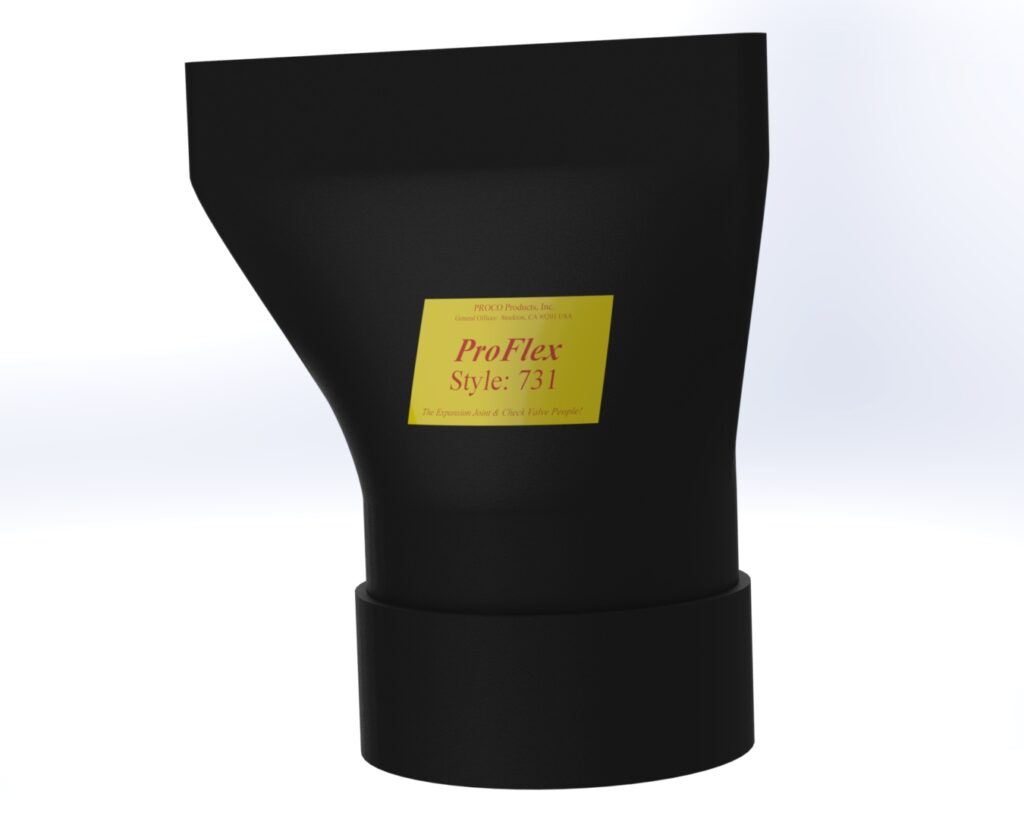
Reverse differential pressure closes the valve. The 711/731 ProFlex™ valves are engineered to allow a full port, important for dealing with headloss and jet velocities.
Unlike swing or flap check valves that can rust, seize, bind or become jammed with obstructions, duckbill check valves consistently provide the 731 ProFlex™ tightest seal for preventing backflow. The flexible elastomer material can even compress tightly around trapped solids if necessary.
Duckbill valves are appropriate for use in residential areas as well. By design, the valves prevent the entry of animals or children. Also, the rubber compound comprising the valves prevents loud banging common with flap type valves.
Many of these valves are installed on “lazy river” type applications for stormwater or sewer systems. They can be installed on pre-existing or new pipelines including manholes, vaults or outfalls and are often used to replace existing flap gates.

Value of the Sloping Bottom
A unique benefit of the 711/731 ProFlex™ valves is created by the low 711 ProFlex™ slope design. These are the only duckbill valves engineered with a sloping bottom for installations where the pipe is close to the floor of the outfall or manhole.
These valves are engineered to crack open at 1 to 2 inches of head pressure. While flat bottom valves may entrap water and solids, PROCO’s 711/731ProFlex™ check valves never have less than a 2-inch sloping bottom. This allows 100 percent drainage through the valve, thus eliminating the problem of standing water.
Additional Benefits
While the ability to eliminate standing water and prevent backflow conditions is especially important, ProFlex™ valves provide cost savings in several ways.
Quick, Cost-Effective Installation
The new 711/731 ProFlex™ check valves are easily installed without costly and difficult modifica-tions to existing structures. While the sloping bottom allows maximum drainage, the minimal slope still allows easy installation with minimal clearance.
The flanged style 711 model has optional drilling patterns to match flange specifications. Custom headwall drilling is also available. The 731 slip on model fits over the outside pipe diameter, with 316 stainless steel clamps for securing the valve to the pipe.
No Maintenance and Long Life-Span
Wave action, corrosive materials, abrasive sand, and debris cause flap and swing check valves to rust, bind, seize, wear and become inoperable. Maintenance on these types of valves can be expensive and difficult.
The durable, all-elastomeric construction of the ProFlex™ valves provides 100 percent resistance to algae and barnacles, abrasive slurries, and almost any type of media. ProFlex™ check valves are also fire retardant. And unlike the flap or swing check valves, there is nothing to rust or degrade on the ProFlex™ valves.

These valves can be constructed out of a variety of elastomers, including ANSI/NSF-61 material suitable for drinking water. The check valves will not warp and can be used in any temperature conditions, from -65 to +250 degrees F with the properly specified elastomer.
Due to the simple operating principles and extremely durable construction, the 711/731 ProFlex™ valves require zero maintenance. In addition to cost savings, these no-maintenance valves greatly improve system reliability.
Because the valves are manufactured with the highest grade of elastomers, their life expectancy ranges from 35 to 50 years.
Wide Range of Sizes and Materials
As noted, the PROCO Series 700 ProFlex™ valves are available in a wide selection of elastomers, using the finest engineered materials. They are constructed by some of the most experienced technicians in the industry.
Sizes range from 4-inch pipe diameter to 72-inch. ProFlex™ rubber check valves can also be designed to install on an “out of round” pipe or special size if necessary.
Cost-Effective, Reliable Method to Prevent Standing Water and Flooding
City leaders want to protect their citizens from the public health threats caused by backflow con-ditions and standing water. In some cases, problems with existing ineffective swing or flap check valves may result in dangerous instances of standing water or flooding.
PROCO’s new 711/731 ProFlex™ rubber check valves with the low slope bottom provide a reliable and cost-effective solution. Their simple, yet elegant design requires no maintenance. Constructed of the finest elastomers and engineered in precise detail, the valves ensure consistent, reliable operation for 35 to 50 years. Most importantly, the sloping bottom allows complete drainage to eliminate the problem of standing water.





